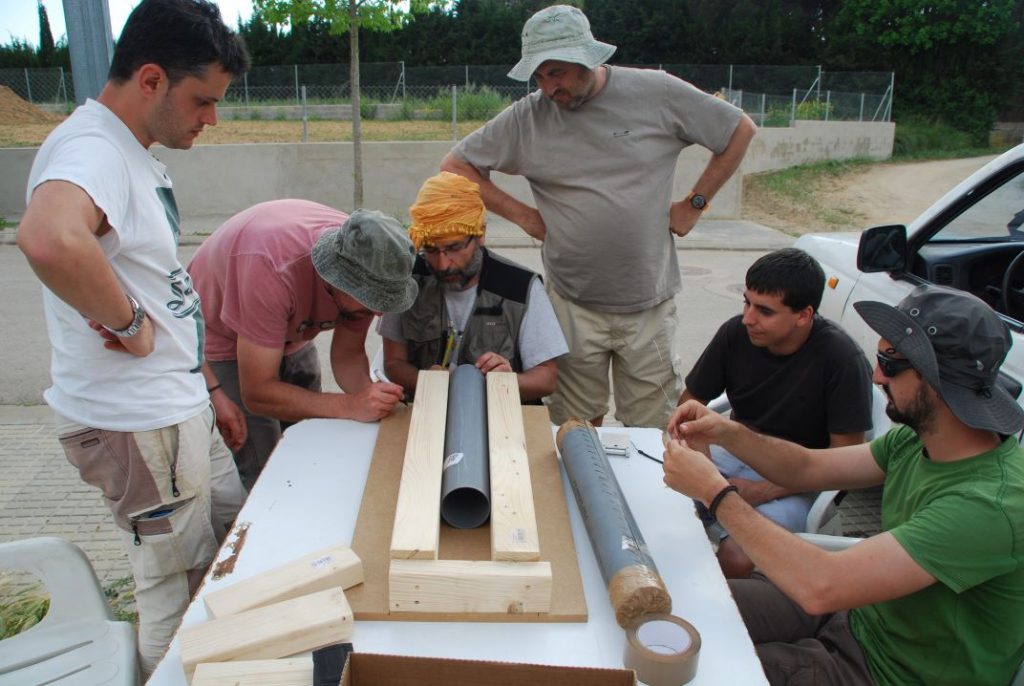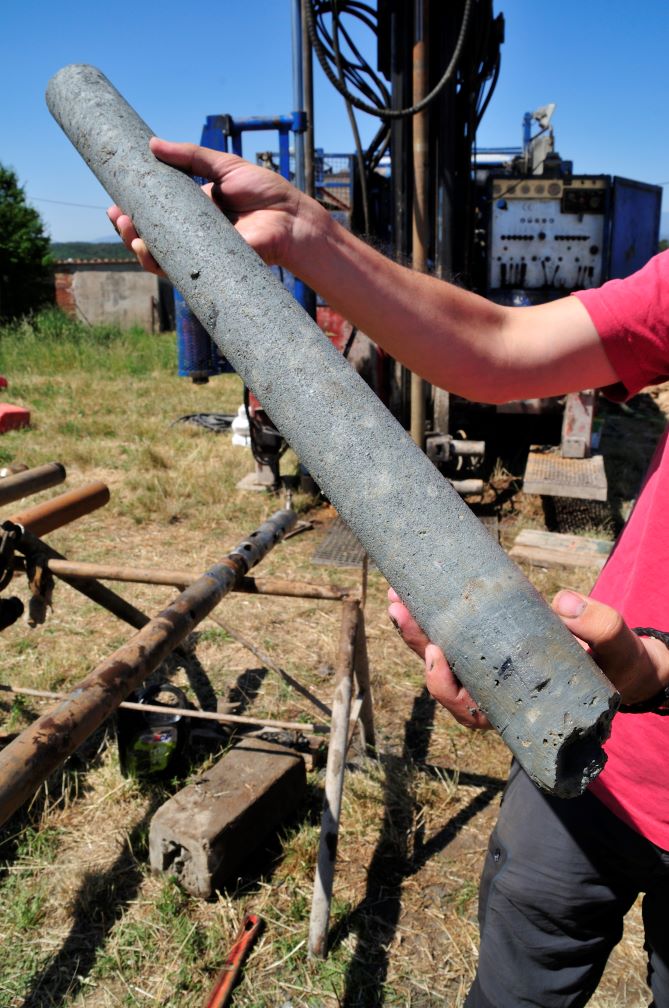13/09/2021
A catalan research team discovers the eruption mechanisms and inner structure of a 3.5-million-year-old volcano in Caldes de Malavella
To find out, the researchers have generated a 3D model, the first of its kind in this type of geological structures

To find out, the researchers have generated a 3D model, the first of its kind in this type of geological structures
The ancient volcano El Camp dels Ninots located in the town of Caldes de Malavella hosts one of the most relevant paleontological sites of Pliocene age in Europe. The site is part of the lake sediments developed within the crater of the volcano. The volcano eruption, which is known as maar-diatreme, took place 3.5 million years ago. This type of volcanic eruption is highly explosive due to the underground interaction between magma and groundwater, resulting in a crater that lacks the volcanic edifice that characterises other types of volcanoes. For this reason, the main volcano structure is buried underground. An international team of researcher including two members from Institut Català de Paleoecologia Humana i Evolució Social (IPHES-CERCA) and from Àrea de Prehistòria from Universitat Rovira i Virgili (URV) have published a study that reveals details on the eruption process and the inner structure of the volcano.
Through eleven boreholes drilled into the crater of the volcano –among them two research wells drilled in 2015 reaching more than 100 m depth– and geological and geophysical observations, the researchers have reconstructed the inner structure of El Camp dels Ninots volcano. This data has led to the generation of the first 3D model of a maar-diatreme volcano. The model reveals that the volcanic eruption took place through a combination of phreatomagmatic and strombolian explosions at a depth of 210 m generating a volume between 0.012 and 0.004 km3 of volcanic tuff and slag. The results of this research have been published this month in the international Journal of Volcanology and Geothermal Research.
“The results obtained at El Camp dels Ninots using 3D geological modelling software typically applied in hydrocarbon and raw materials exploration will allow us to better understand the details on the behaviour of this type of volcanic eruption, which represents the second most important volcano type on Earth”, Xavier de Bolós, the main author of this research and postdoctoral research in Geology and Vulcanology at Universidad Nacional Autónoma de México (UNAM), has said.

In addition, this research “has revealed the eruptive phases that led to the formation of the volcano, its internal structure as well as the theoretical volume of volcanic and subsequent lacustrine sediments”, Bruno Gómez de Soler, researcher at IPHES-CERCA, co-director of the excavations at Camp dels Ninots, lecturer in the programme in anthropology and human evolution offered jointly by UOC (Universitat Oberta de Catalunya) and la URV (Universitat Rovira i Virgili), and one of the co-authors of this research, has said.
The research arises from the project El Plio-Pleistocè del Camp dels Ninots i la depressió Prelitoral: evolució paleoclimàtica, dispersions faunístiques i humanes II (CLT009/18/00052) funded by the Generalitat de Catalunya led by IPHES-CERCA. The research has been carried out by a team of catalan researchers working in international universities, Xavier de Bolós from Universidad Nacional Autónoma de Mexico (UNAM); Oriol Oms from Universitat Autònoma de Barcelona (UAB); Pablo Rodríguez-Salgado from the Irish Centre for Research in Applied Geosciences (iCRAG) at University College Dublin (UCD); Joan Martí from the Spanish Scientific Research Council (GEO3BCN-CSIC); Bruno Gómez and Gerard Campeny from IPHES-CERCA and URV.
Article Bolós et al. (2021). Eruptive evolution and 3D geological modelling of Camp dels Ninots maar-diatreme (Catalonia) through continuous intra-crater drill coring. Journal of Volcanology and Geothermal Research 419: 107369. https://doi.org/10.1016/j.jvolgeores.2021.107369
